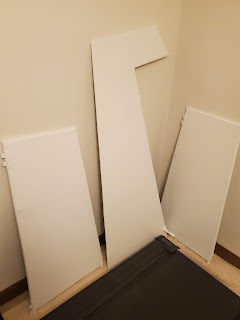We continued working on the wing tips. With the fiberglass pieces glued on for the wingtip lights, we then used a few coats of lightweight filler to smooth the joints between these pieces and the wingtips.
 |
| Filler added to smooth transition to the light mounts |
We also discovered an issue where the screw attach holes drilled in the wingtips no longer lined up with the holes in the wings. This appears to have been caused by the fiberglass modification we made to the front of the wingtips. While this modification was needed to get the leading edge of the wingtip to line up with the leading edge cuff, it also caused their position to shift slightly so the previously drilled holes just didn't work. We decided that the simplest fix was to fill in these holes and drill new ones, so that's what we did. We filled them with epoxy/flox combo, let it dry overnight, and then redrilled the holes the next day, using a hole-locator tool to ensure that the new holes in the wingtip lined up with the existing holes in the wings.
 |
| New holes drilled, with screws temporarily installed |
We also started working on another wingtip modification to close up a large opening at the back which should improve the aerodynamics a bit. We are using a few pieces of balsa wood to keep it light, and plan to apply epoxy-varnish to them before installation. Hours: 10.5




















































